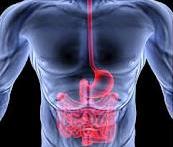If you’re ready to switch to a wholefoods, plant-based diet, congratulations! But before you rip open your next bag of raw nuts, or throw those dry beans into a pot to boil, there are some very important things you should know. While these types of foods can be truly beneficial to your health, they can become a serious health hazard when not prepared with proper care.
Apparently our ancestors understood this very well, because grains, beans, nuts and seeds in their natural form were never consumed without being soaked or fermented first. It was a time-honored tradition of food preparation that kept agrarian cultures thriving. It wasn’t until food mechanization took the reigns and the processing of food became an industry, that soaking and fermenting became a dying tradition.
It is no coincidence that in the modern world, where these foods are largely consumed in the form of breads, crackers, cereal, nut butters, etc., that millions are suffering from digestive issues, autoimmune disorders, and a host of other nutritionally related diseases.
It’s not enough to take processed foods off your plate. Yes, this is a big step, but there is still more to go. If you’re serious about taking your wholefoods, plant-based eating to the next level, your days of simply tossing dry beans and grains into a pot and boiling them, or eating raw nuts and seeds out of a bag are over.
Those Pesky Anti-Nutrients
Grains, beans, nuts and seeds appear to be innocent foods, but they aren’t. In fact, they’re pretty nasty in the wild. Mother Nature equipped these foods with an arsenal of weapons known as anti-nutrients, that are locked in the outer bran or seed coat. These toxic anti-nutrients protect them from insects and predators, and invasion by bacteria, viruses or fungi. The lioness has her sharp fangs and claws, the humble plant seed has its anti-nutrients!
Much of these anti-nutrients are naturally eliminated from the outer coating when there is enough moisture, warmth and acidity to sustain the plant seed once it enters the ground to germinate. This is why soaking has been an important process in food preparation for thousands of years–it mimics the natural germination process that takes place in nature. Germination neutralizes anti-nutrients and unlocks precious enzymes and nutrients that render these foods edible.But before we go into the benefits of soaking, let’s take a look at the different types of anti-nutrients.
Phytic Acid and Mineral Deficiencies
The most known anti-nutrient found in grains, beans, nuts and seeds is phytic acid (or phytate), a phosphorous-bound organic acid that protects the plant seed from premature germination. When you eat foods with these phytic acids still intact, they bind with important minerals such as calcium, zinc, magnesium, iron and copper and prevent absorption. Phytic acid also has the potential to block protein absorption.
Over time, regularly consuming foods (processed or whole) that contain phytic acid can lead to serious mineral deficiencies and cause a wide array of health problems including digestive irritability, impaired immune function, allergies, skin irritations, decaying teeth, bone loss, anemia, hormone disruption, and poor physiological development in infants and children. These health issues are especially prevalent in babies and young children who are fed diets high in phytate foods such as cereal, crackers, bread, nut butters, soy formula, etc.
Enzyme Inhibitors
Plant seeds, especially nuts and seeds, also contain enzyme inhibitors that ward off predators. These inhibitors block enzyme function, most notably the uptake of trypsin, an enzyme responsible for digesting protein. Animal research has shown that overly consuming foods containing trypsin inhibitors can lead to hyper-secretion of pancreatic enzymes, an enlarged pancreas and benign tumors.The increased requirement for pancreatic enzymes also depletes the body of valuable resources for other physiological functions as well, and sets up the conditions for chronic inflammation, insulin resistance, impaired digestion, immune suppression, increased allergies, severe intestinal issues and declined mental function.
Lectins
Although lectins can be found in almost all foods, they are highly concentrated in grains (especially wheat), beans (especially soy), and nuts. They act as very powerful insecticides that ward off predators. When they are consumed in large quantities, such as a diet high in wheat and soy, lectins are a natural disaster for the small intestine. They are carb-binding proteins that stick to the lining of the small intestine and damage the sensitive villi responsible for transporting nutrients into the bloodstream.
Eventually, lectins damage the villi so bad that leaky gut syndrome occurs. “Leaky gut” means that the very delicate lining of the small intestine is so damaged that particles of undigested food, proteins, toxins and other pathogens are able “leak” into the bloodstream and bind to tissues and organs throughout the body. As a reaction, the body increases inflammation to protect the affected tissue. This is why lectins are also linked with autoimmune disorders like IBS, Chron’s, colitis, thyroiditis, fibromyalgia, arthritis and so on.
Side Note About Wheat & Soy: Both soy and wheat are very high in lectins, and soaking and fermenting does not remove them. Watch carefully for “whole food” items that contain wheat and/or soy. Health food stores are literally full of them.
Beans…Why They Are So Hard to Digest
Beans are a beloved staple for many vegans and vegetarians for their frugality and protein content. They are delicious and filling, but they also cause some undesirable digestive issues. The obvious of these is gas, bloating, cramping, and indigestion.
Besides the lectins and phytic acid contained in most legumes, the harder beans such as kidney beans, navy beans and black beans contain oligosaccharides. Humans do not produce the enzyme necessary to break down these complex sugars. When consumed, the oligosaccharides ferment in the lower intestine producing carbon dioxide and methane gases.
Yes, farting is embarrassing, but your self-esteem isn’t the only thing taking a beating. The nasty bacteria residing in your intestines love fermentation! Constant fermentation in your intestines leads to inflammation and damage to the intestinal lining.
Soaking and Fermenting Increases Nutritional Content
The common thread to all of these anti-nutrients is that they cause severe distress to the digestive system, which leads to a host of health issues that can be quite difficult to turn around. To add a little more fuel to the fire, when you consume grains, beans, nuts and seeds that are not soaked or fermented, you also miss out on the fabulous nutrients locked inside.
Mother Nature wants to ensure that these foods are nutritionally void so predators won’t eat them, so she keeps their goodness locked away deep inside. Vital proteins, vitamins (especially vitamin B), enzymes and minerals are unlocked through the soaking process, making them ten times more nutritious than in their raw form. So not only do you deactivate harmful nutrients, you activate all the goodness that Mother Nature wants you to have.
Here is a long list of benefits when you soak your grains, beans, nuts and seeds:
- Remove or reduce phytic acid
- Neutralize enzyme inhibitors
- Eliminate or reduce lectins, gluten, tannins, goitrogens, and other antinutrients that are hard for the body to break down
- Encourage the production of beneficial enzymes
- Increase nutrient content, especially vitamin B
- Break down hard-to-digest proteins in grain, making them easy-to-digest
- Increase bioavailability of proteins
- Prevent mineral deficiencies and bone loss
- Reduce hypersecretion of pancreatic enzymes
- Maximize digestion which reduces the need for the body to centralize its reserves to digest food
Soaking before eating is not as difficult as it sounds and simply requires planning more than it does time. Here’s to happy soaking.



